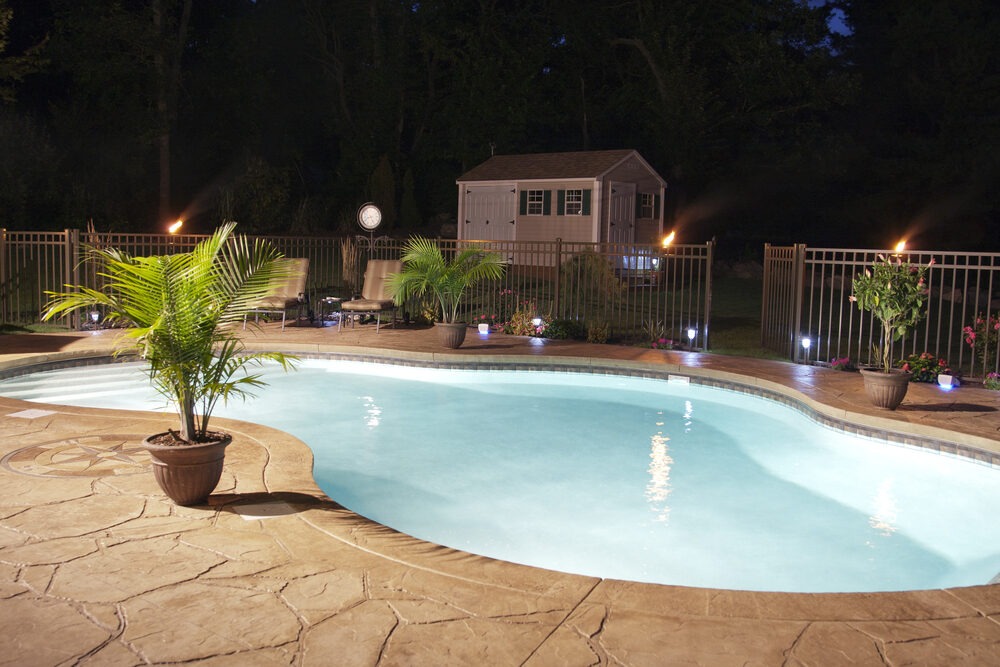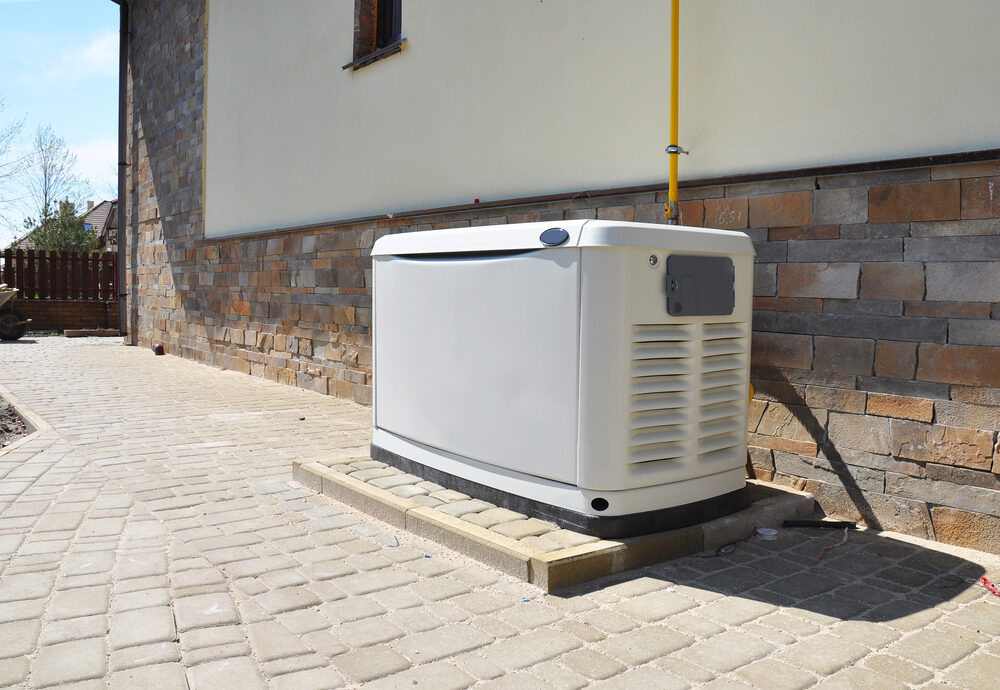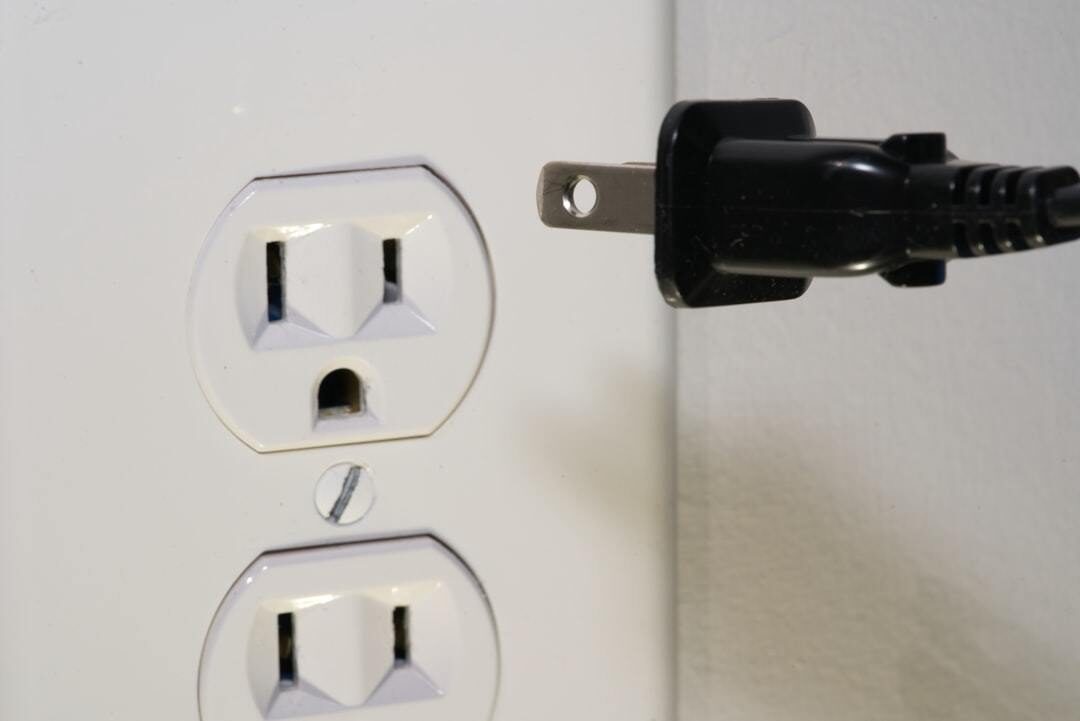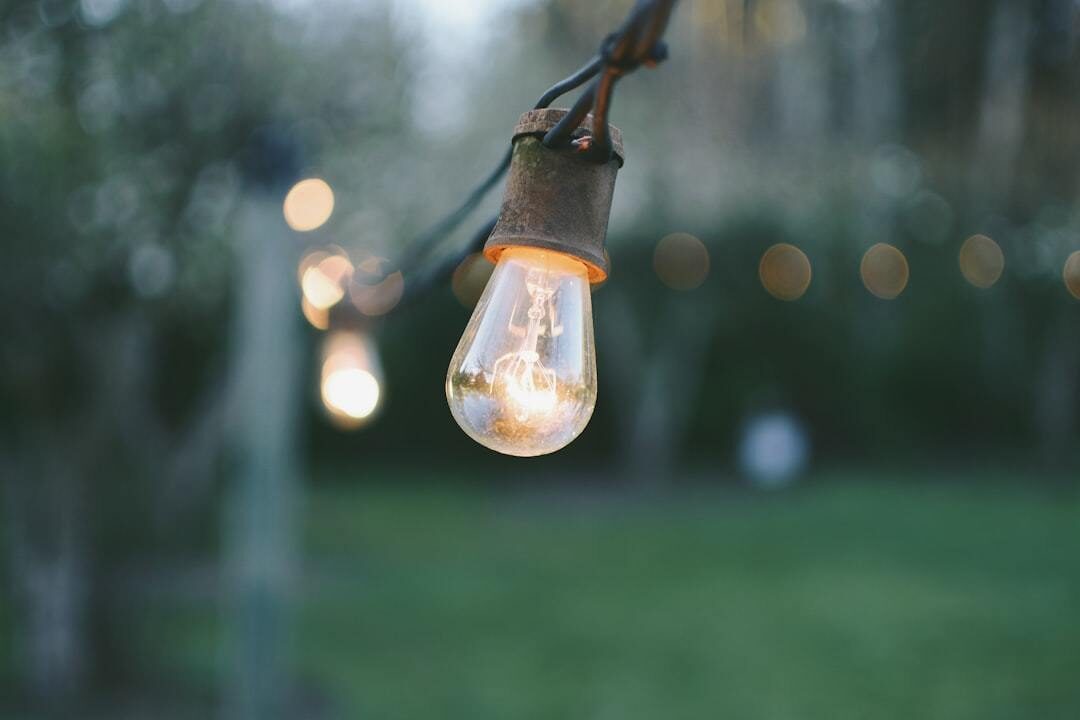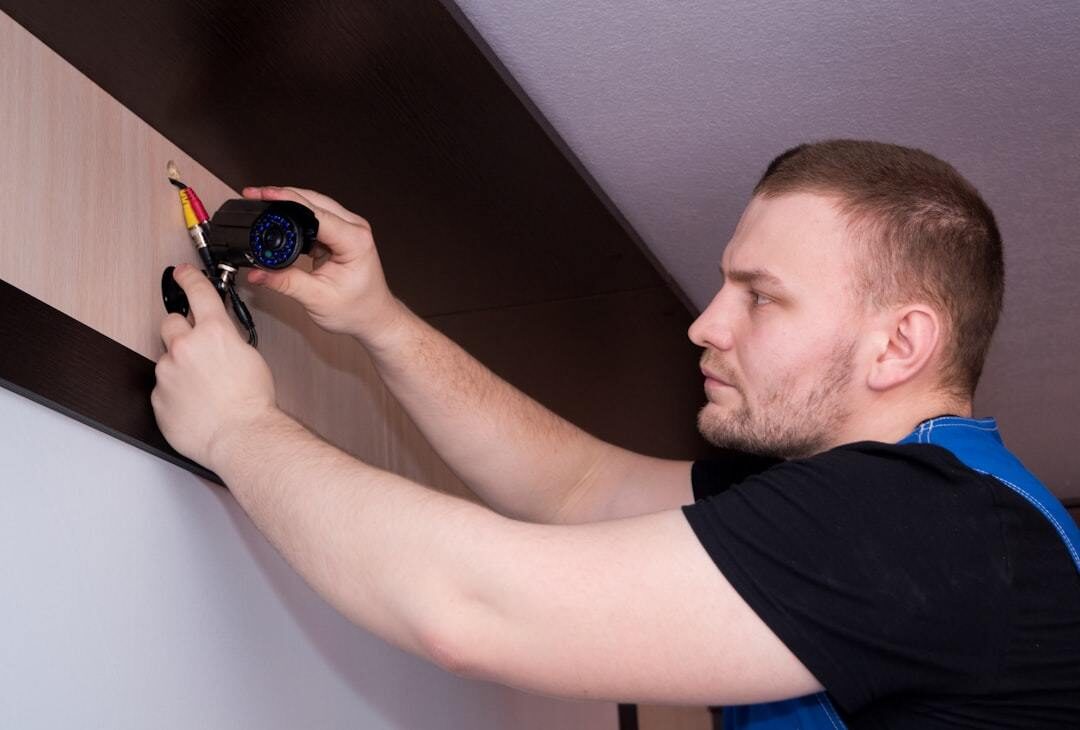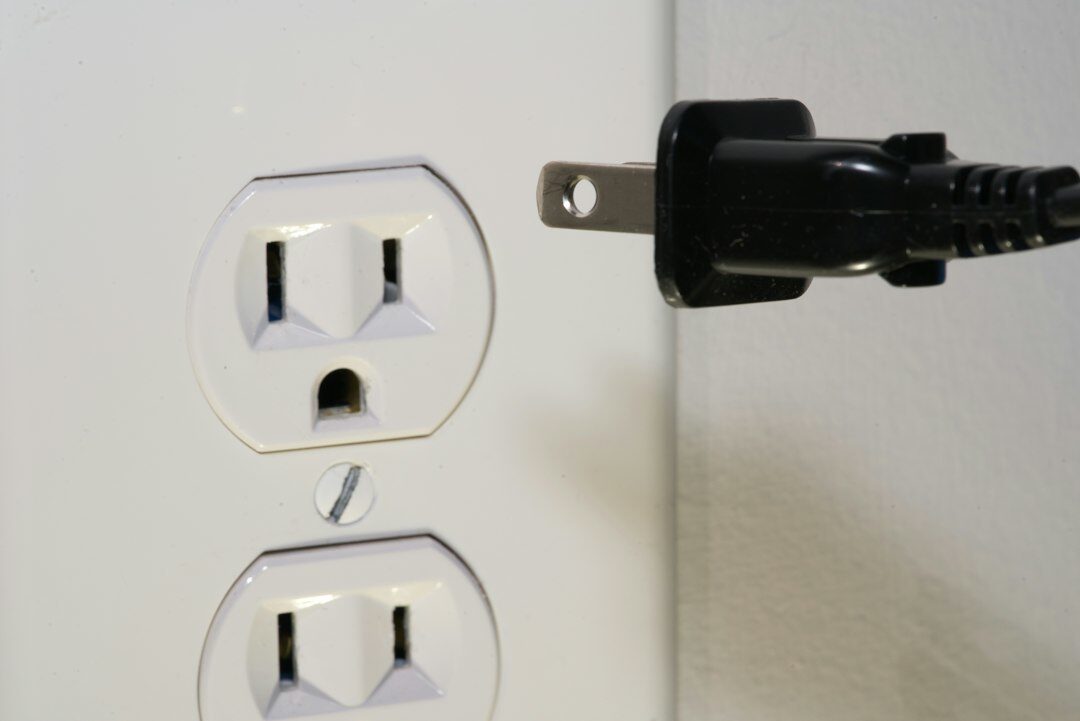So you’ve decided it’s time your pool deck stepped out of the shadows. Well, you’re in luck because lighting up that area isn’t just about adding bulbs around water; it’s an art form. If “how to light a pool deck” has been sitting at the top of your Google searches lately, breathe easy. We’re about to walk through some simple yet transformative ways to bring luminance and life back into those evening swims without turning your backyard into a spaceship launch pad.
QG Smart Home can help improve your pool deck lighting with our outdoor entertainment packages. We also work closely with a pool servicing company in Montgomery County, PA if there are any needs for your pool servicing or pool lighting.
Lights have this magic trick – they can make even the simplest spaces look like scenes from high-end resorts. Whether it’s subtle glows highlighting key features or dramatic beams creating contrast and depth, we’re diving right in (pun intended)!
Exploring Pool Deck Lighting Ideas
Summer is finally here and the swimming pool in your home will take center stage once again. With summer coming, you need to make sure the lights you have around your pool don’t attract bugs. Find out what type of lights don’t attract bugs in another article by us.
As a proud pool owner, you need to find ways to make your pool a safe and inviting space throughout the day and in the night. During the day, you won’t have to do much. What majestic body of water doesn’t catch the eye in an outdoor living space (or indoor one), after all?
When the sun sets, though, you’ll need to light up your pool area to ensure it remains a safe and aesthetically pleasing outdoor space. With that in mind, this article will explore the benefits of lighting your pool and six effective pool lighting ideas for your swimming pool and its surrounding areas.
Creating the Desired Ambiance with Lights
The primary benefits of lighting your swimming pool are aesthetic and practical. You can find out what lumens your outdoor lights should be to help with the ambiance of your outdoor space.
Tasteful lighting can make your pool area a place to gather with friends and family. You can also use your lighting to create an ambiance. Lighting, after all, affects mood. Soft light, in particular, makes the environment more relaxing.
Moreover, by illuminating specific pool features, such as waterfalls or landscaping, you can highlight the unique elements of your pool, adding to its visual appeal.
The secondary benefit of lighting your pool area is the health and safety element. People are less likely to get into accidents in the pool or fall from the pool deck into the water when they can see where they’re going.
With this in mind, let’s look at six pool lighting ideas you can implement to enjoy the perfect pool experience this summer.
Incorporating Variety in Your Lighting Choices
When it comes to lighting fixtures for a pool deck, there are a few types that work best. LED strip lights are a popular choice as they can be easily installed and provide a soft, ambient glow. In-ground spotlight is also recommended as it can illuminate specific features of the pool deck, such as palm trees or decorative elements. Also, lights that run on solar power don’t just save energy – they’re kind to the planet too.
Utilizing Natural Light Sources
You can complement the electric lighting with fire features like lanterns, tiki torches, or statement fire bowls. The dancing flames by the poolside really kick up the cozy vibes, don’t they? At the same time, the flames will provide a welcome warmth around the deck, making it cozy for pool parties in the evening hours.

Choosing the Right Lighting for Your Pool Deck
Considering Pool-Safe Materials
When selecting lights, you need to choose appropriate light fixtures that can withstand outdoor elements, especially water, considering they will be installed around the pool. Some of the best materials for outdoor pool deck lighting include bronze, brass, and stainless steel.
Selecting Suitable Lights for Your Pool Type
There are various options to light up your deck, like post lighting, where you install pool lights on top of deck posts and railing posts. You can also use in-ground lights, like recessed mini narrow spot-up lights, to illuminate your decking.
Investing in Programmable LED Lighting
Some creative ways to incorporate lighting into the design of a pool deck include using LED strip lights to line the edges of the deck, installing underwater lighting in the pool for a dramatic effect, incorporating solar-powered lanterns or stake lights for a sustainable and decorative touch, utilizing recessed lighting fixtures along the stairs or pathways, and adding string lights or hanging lanterns to create a cozy ambiance.
Lighting Techniques for Enhancing Your Pool Deck
Illuminating the Exterior and Interior of the Pool
Some creative ways to incorporate lighting into the design of a pool deck include using LED strip lights to line the edges of the deck, installing underwater lighting in the pool for a dramatic effect, incorporating solar-powered lanterns or stake lights for a sustainable and decorative touch, utilizing recessed lighting fixtures along the stairs or pathways, and adding string lights or hanging lanterns to create a cozy ambiance.
Using Underwater Lighting for Water Features
Some creative ways to incorporate lighting into the design of a pool deck include using LED strip lights to line the edges of the deck, installing underwater lighting in the pool for a dramatic effect, incorporating solar-powered lanterns or stake lights for a sustainable and decorative touch, utilizing recessed lighting fixtures along the stairs or pathways, and adding string lights or hanging lanterns to create a cozy ambiance.
Highlighting Stairs and Pathways
Some creative ways to incorporate lighting into the design of a pool deck include using LED strip lights to line the edges of the deck, installing underwater lighting in the pool for a dramatic effect, incorporating solar-powered lanterns or stake lights for a sustainable and decorative touch, utilizing recessed lighting fixtures along the stairs or pathways, and adding string lights or hanging lanterns to create a cozy ambiance.
Safety Considerations When Lighting a Pool Deck
Ensuring Safe Installation of Lights
If you have kids or like hosting regular get-togethers over the summer, there’s a strong likelihood that your pool sees a lot of activity and foot traffic. One way to avoid damaging a light fixture—or worse, having an injured guest—is through deck lighting.
Lighting Up the Deck Area for Safety
Besides the practical illumination, deck lighting also creates an aesthetic appeal to your pool area.
Working with Floor Deck Lights
There are various options to light up your deck, like post lighting, where you install pool lights on top of deck posts and railing posts. You can also use in-ground lights, like our recessed mini narrow spot-up lights, to illuminate your decking.
Light up your pool deck to blend safety with style. Use LED strips for a soft glow, spotlight features with in-ground lights, and add warmth with fire elements. Choose durable materials like bronze or stainless steel and consider programmable LEDs for versatility.
Innovative Ways to Light Your Pool Deck
Want to take your pool deck lighting to the next level? It’s time to get creative and think outside the box.
With a few innovative lighting techniques, you can transform your outdoor space into a stunning oasis that’s perfect for entertaining or relaxing after a long day.
Using Directional Lights for Structures and Greenery
Directional lights are a game-changer when it comes to highlighting the unique features of your pool deck. With the right lighting setup, you can spotlight cool features like pergolas or gazebos, adding layers and a bit of drama to your outdoor space.
But don’t stop there. Use directional lights to showcase the beautiful greenery surrounding your pool area. Shining lights up into trees or bushes can seriously turn up the drama and amp up the vibe of any space.
According to CAST Lighting, “Some creative ways to incorporate lighting into the design of a pool deck include using LED strip lights to line the edges of the deck, installing underwater lighting in the pool for a dramatic effect, incorporating solar-powered lanterns or stake lights for a sustainable and decorative touch, utilizing recessed lighting fixtures along the stairs or pathways, and adding string lights or hanging lanterns to create a cozy ambiance.”
Creating Mood with Dimmers and Lighting Zones
Want to take your pool parties to the next level? Dimmers and lighting zones are your secret weapons.
By installing dimmers, you can easily adjust the brightness of your lights to create the perfect mood for any occasion. Hosting a romantic dinner for two? Dim the lights for a cozy, intimate vibe. Throwing a lively pool party? Turn up the brightness to keep the energy high.
But why stop there? Consider creating different lighting zones around your pool deck to add visual interest and flexibility. You can have one zone for dining, another for lounging, and even a separate zone for the pool itself. “There are various ways you can illuminate your pool decking. We discussed ten ways you can light up your decking in this post. For example, you can use niche lighting over your deck. Consider also using dimmers so you can set the ambiance for the evening,” suggests CAST Lighting.
Highlighting Unique Features of Your Pool
Every pool is unique, so why not showcase what makes yours special? Whether it’s a stunning waterfall, a cozy fire pit, or a luxurious spa, highlighting these features with the right lighting can take your pool deck to the next level.
One of the simplest ways to illuminate your pool deck area is by hanging string lights around the perimeter. These affordable and energy-efficient lights offer an intimate and relaxing atmosphere that provides ample lighting without being too bright.
So, what are you waiting for? Get creative with your pool deck lighting and transform your outdoor space into a true oasis. Use these cool tricks, and before you know it, everyone on your street will wish they were as savvy as you.
Get creative and light up your pool deck with directional lights, dimmers, and unique lighting zones. Make each feature shine, from greenery to architectural elements, setting the perfect mood for any occasion.
Conclusion
All movies with robots might show them plotting our downfall under neon lights but here’s something less dramatic and far more useful – illuminating our outdoor havens effectively. That whole “how to light a pool deck” query? It turns out; there wasn’t any dark sorcery needed after all – just good old-fashioned planning and creativity.
We walked through LED strips tickling the edges of our decks like shy fireflies, underwater fixtures bringing Atlantis vibes straight into our homes, and tiki torches casting tall tales onto excited faces gathered around warmth and stories. And while Hollywood spins yarns of AI uprising under harsh spotlights,
Contact QG Smart Home if you are in Pennsylvania and need outdoor lighting in Bucks County area. Our electricians in Bucks County and surrounding area are ready to help with your pool deck lighting, give us a call today.
I’m here flipping switches on soft-lit gatherings where laughter floats above illuminated waters.



